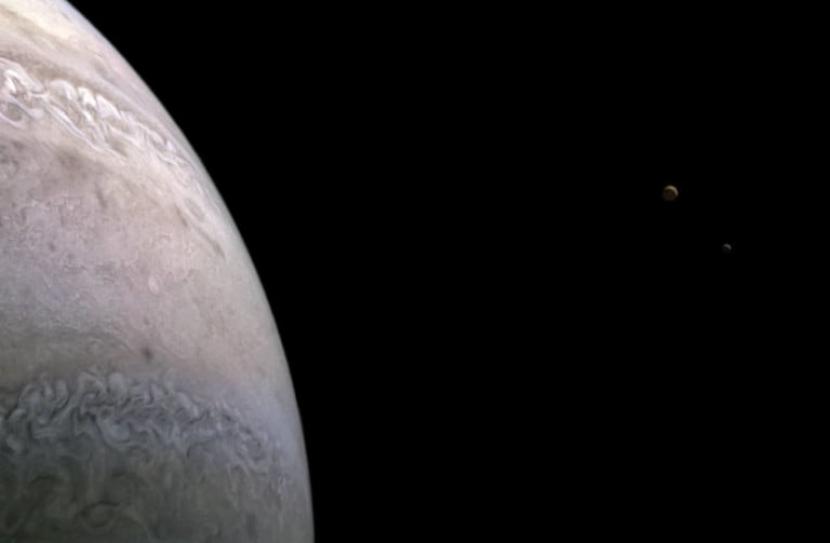The Juno plane took photos of Io and Europe in its 39th flyby on January 12, 2022.
REPUBLIKA.CO.ID, WASHINGTON — The American Space Agency’s (NASA) Juno spacecraft has taken back stunning new photos of Jupiter’s moons Io and Europa. The latest view of Juno from two months taken during a close flight Jupiter 39th spacecraft on January 12.
Reported from SpaceMonday (21/3/2022), at that time, the spacecraft was about 61,000 kilometers above Jupiter’s cloud tops, at a latitude of about 52 degrees south.
New photo, shared NASA on March 16, it offers a stunning view of Jupiter’s southern hemisphere, with two of its many moons to the right of the frame. An enlarged view that the agency also shared makes the moon clearly visible, with the on the left and Europe on the right.
Jupiter’s moon Io is the most volcanic object in the solar system. Hundreds of volcanoes dotted its surface, some of which spewed plumes of sulfur hundreds of miles high. In contrast, Europa, the smallest of Jupiter’s four giant Galilean moons, has an icy surface, beneath which lies a global ocean of liquid water, scientists believe.
Previous observations have found evidence of possible plumes of water gushing over Europa’s south polar region, suggesting that there is water in the moon’s subsurface ocean breaking through cracks in the ice crust.
The Juno spacecraft is expected to make its closest flight from Europa later this year, in September. During this flyby, the probe will use several of its scientific instruments to study Europa in more detail and capture even more amazing views of the mysterious moon.
The Juno mission will also make close approaches to Io in late 2023 and early 2024, according to a NASA statement. The mission is expected to conclude in September 2025.
Two major spacecraft will soon follow in Juno’s footsteps designed to focus exclusively on understanding the giant moons: NASA’s Europa Clipper mission and the European Space Agency’s Jupiter Icy Moons Explorer (JUICE).
The new Jupiter photo was processed by color scientist Andrea Luck, using raw data from the JunoCam instrument. JunoCam raw images are publicly available online.
–


